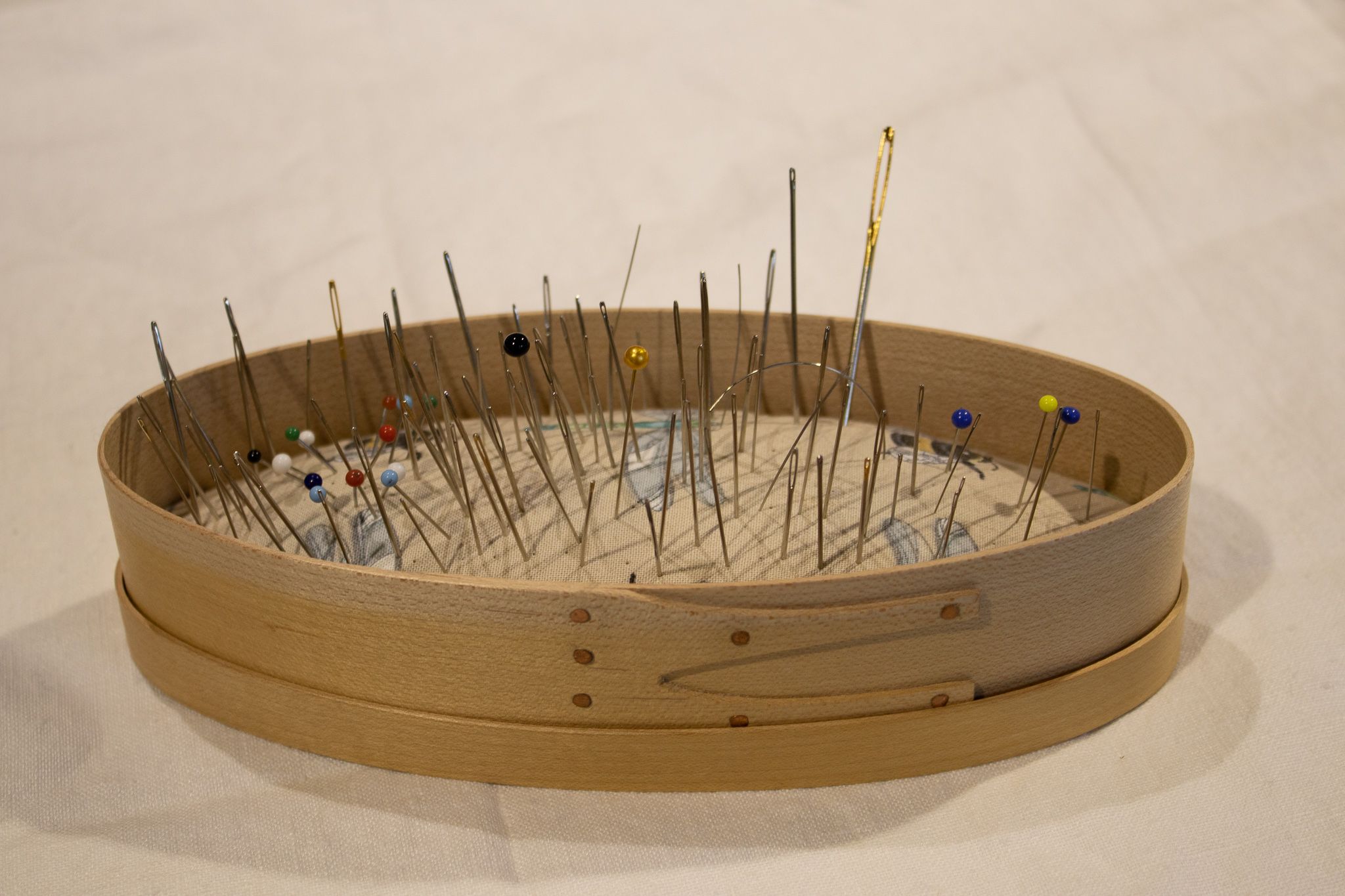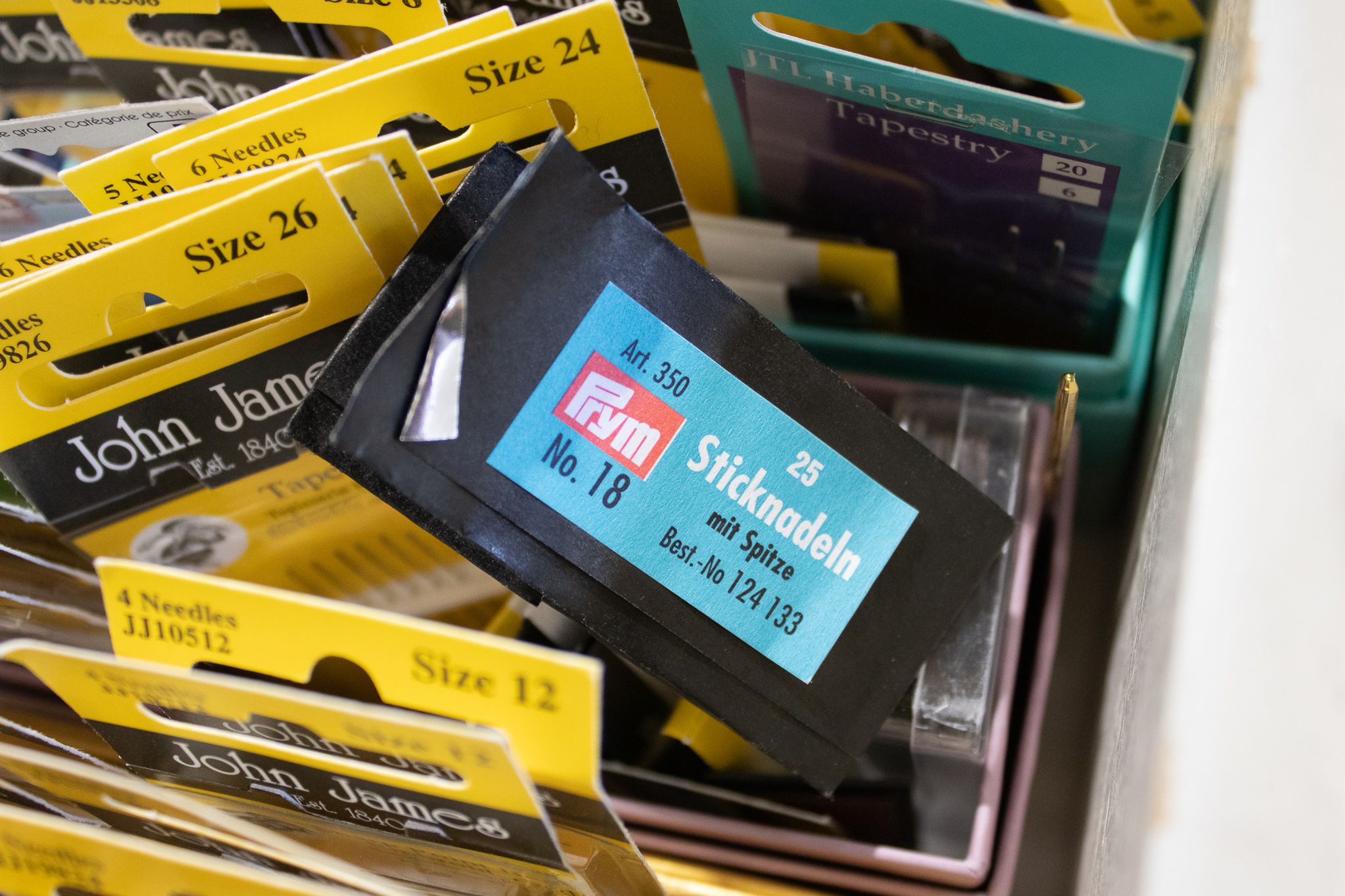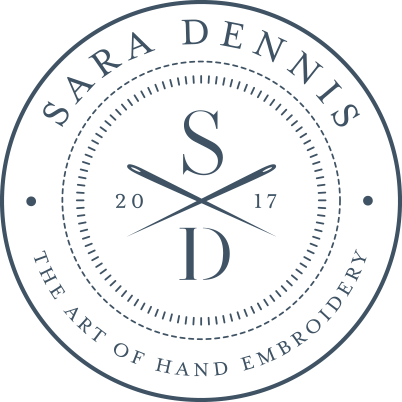What Needle to Use and When!
Needles
A steel implement pointed at one end and with an eye at the other for taking a thread through materials.
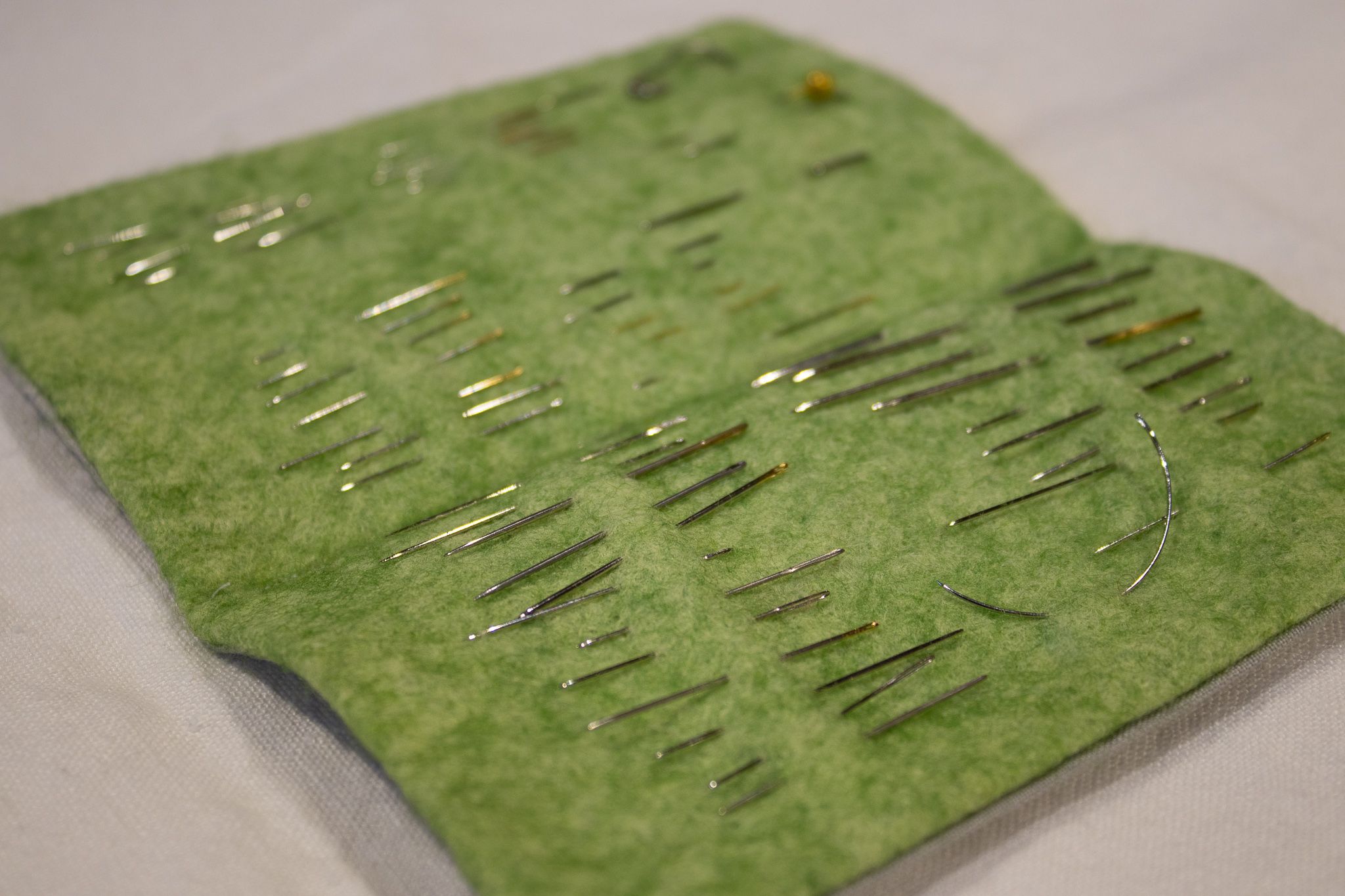
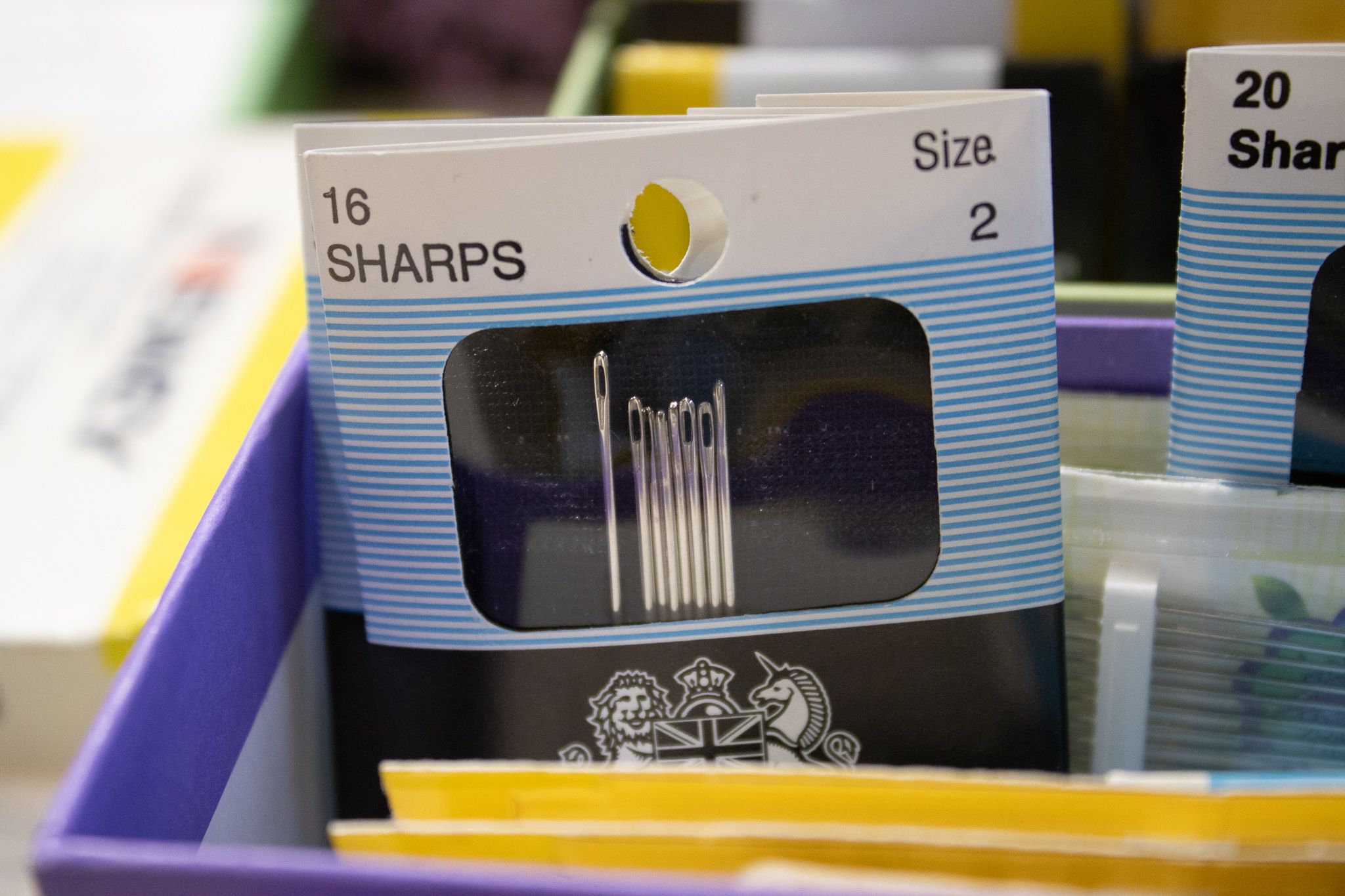
History
The earliest needles were made of bone or wood used to tie animal skins together. Animal sinew or plant material would be used as thread. These early needles were hampered by the ability to make the eye small enough to not damage the material. So a separate awl would be used to make eyelet holes before sewing.
The agave plant also provided a needle and thread combination. The needle was the tip of the leaf with the fibrous pulp forming a thread.
The steel needle was made in `China in the tenth century when drawing wire through a die was introduced.
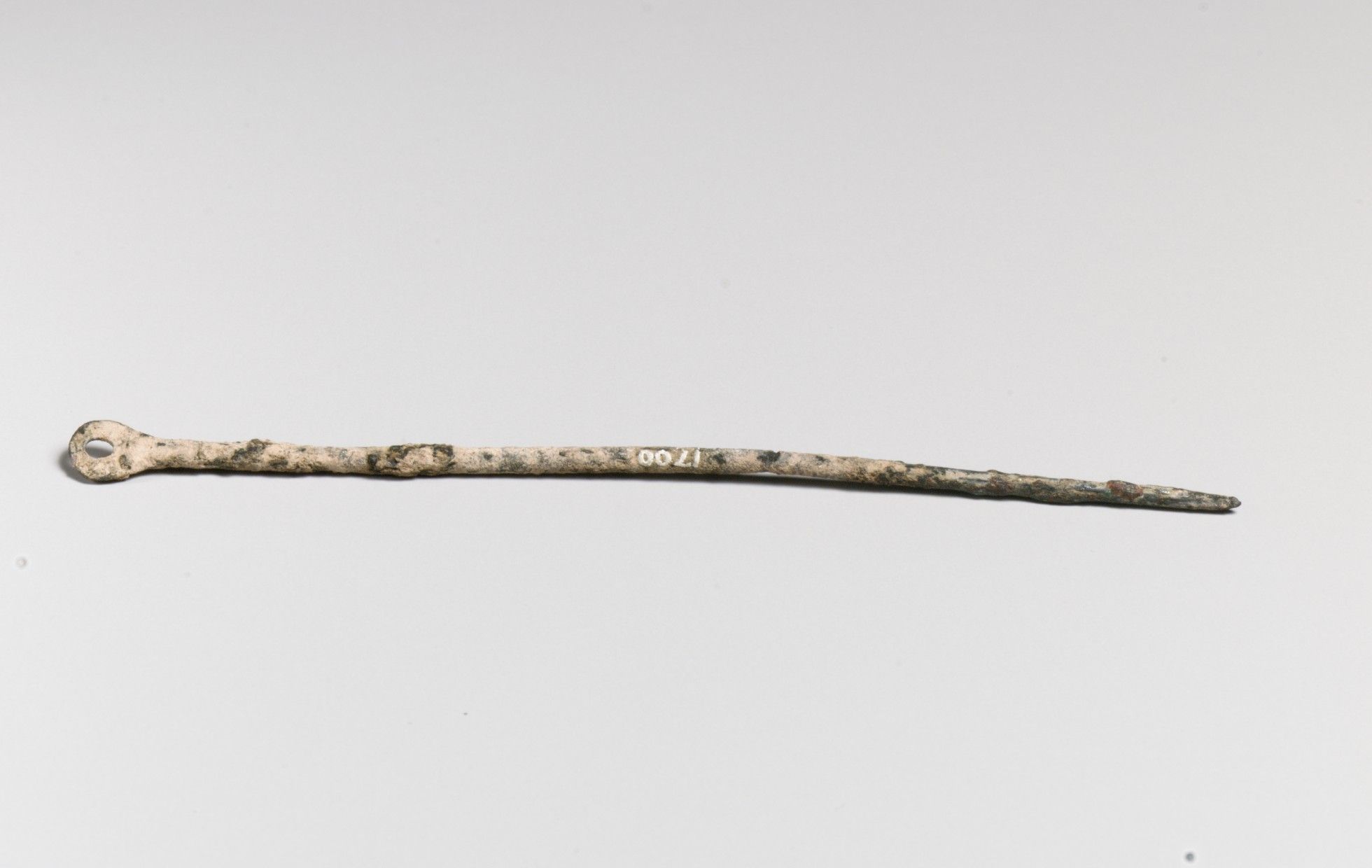
Introduction
Right needle for the right job – the correct needle is essential for a good finish and is easier to use. The eye of the needle should take the tread easily and the treaded needle should pass through the fabric without tugging. Don’t assume that a small needle is always the best, the needle makes a channel for the thread to follow, so if you are using wool and have managed to thread a small needle it may damage the wool every time you stitch. On the other hand, if you use a huge needle with fine thread, it will be difficult to create an accurate stitch.
When I am teaching, I often find that students who are struggling are using the wrong needle.
The higher the number, the finer the needle. BUT needle sizes are not standardized, so one size 10 is not necessarily the same as another. Indeed, some size 10 embroidery needles feel the same as some size 12.
Remember, when angling your needle, the thread follows!
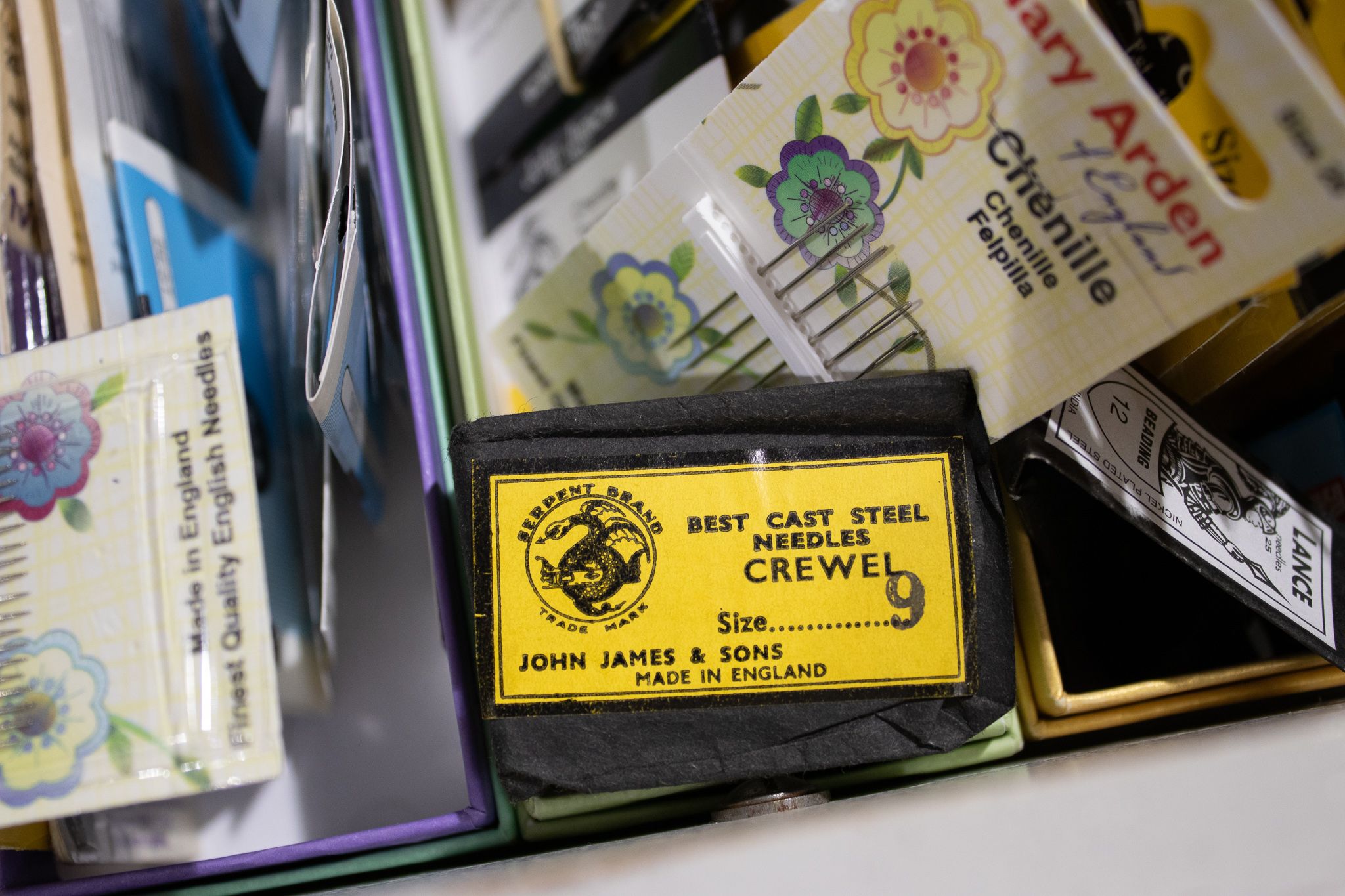
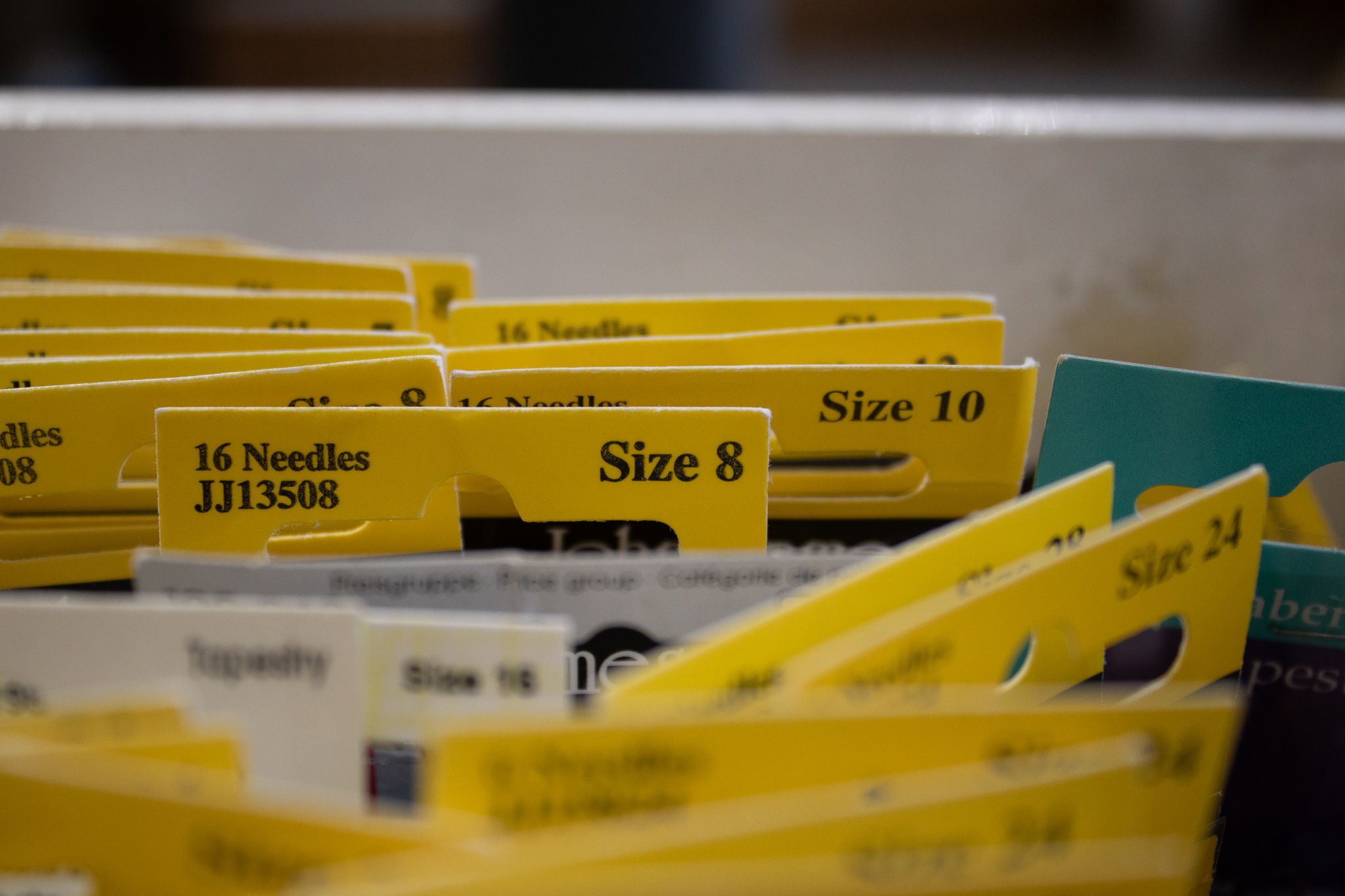
Sharps or carpets – sharps used for general domestic sewing. They have a very sharp point and a small eye, which incidentally makes them tricky to thread.
Sharps are available in sizes 1 to 12
Embroidery or crewel— crewel needles are the same thickness and length as sharps but have a larger eye to accommodate thicker floss silks and stranded cottons.
Embroidery needles are available in sizes 1 to 10
Chenille – chenille needles are short and sharp with a large eye. They are generally used to work with wool on linen for crewelwork. Remember with wool on closely woven linen the smallest needle is not always the most appropriate.
Chenilles are available in sizes 13 -26
Tapestry – tapestry needles have an extra-long eye for thick yarns and a blunt point for use on canvas or even weave fabrics, such as net. They are also used for blackwork and other counted techniques. Lesser-known they are used for plunging in goldwork, as the fabric fibres need to be separated not torn.
Remember to use a tapestry needle if you are not going through the linen – wheels, whipping, weaving and Pekinese.
Tapestries are available in sizes 18 -26
Beading – as the name suggests beading needles are long and fine used for sewing beads. They have elongated eyes to accept thicker thread.
I use a short beading needle for silk shading – they are slightly finer than size 12 embroidery needles but still hold one thread of stranded cotton or silk.
Beading needles are available in sizes 10 to 15.
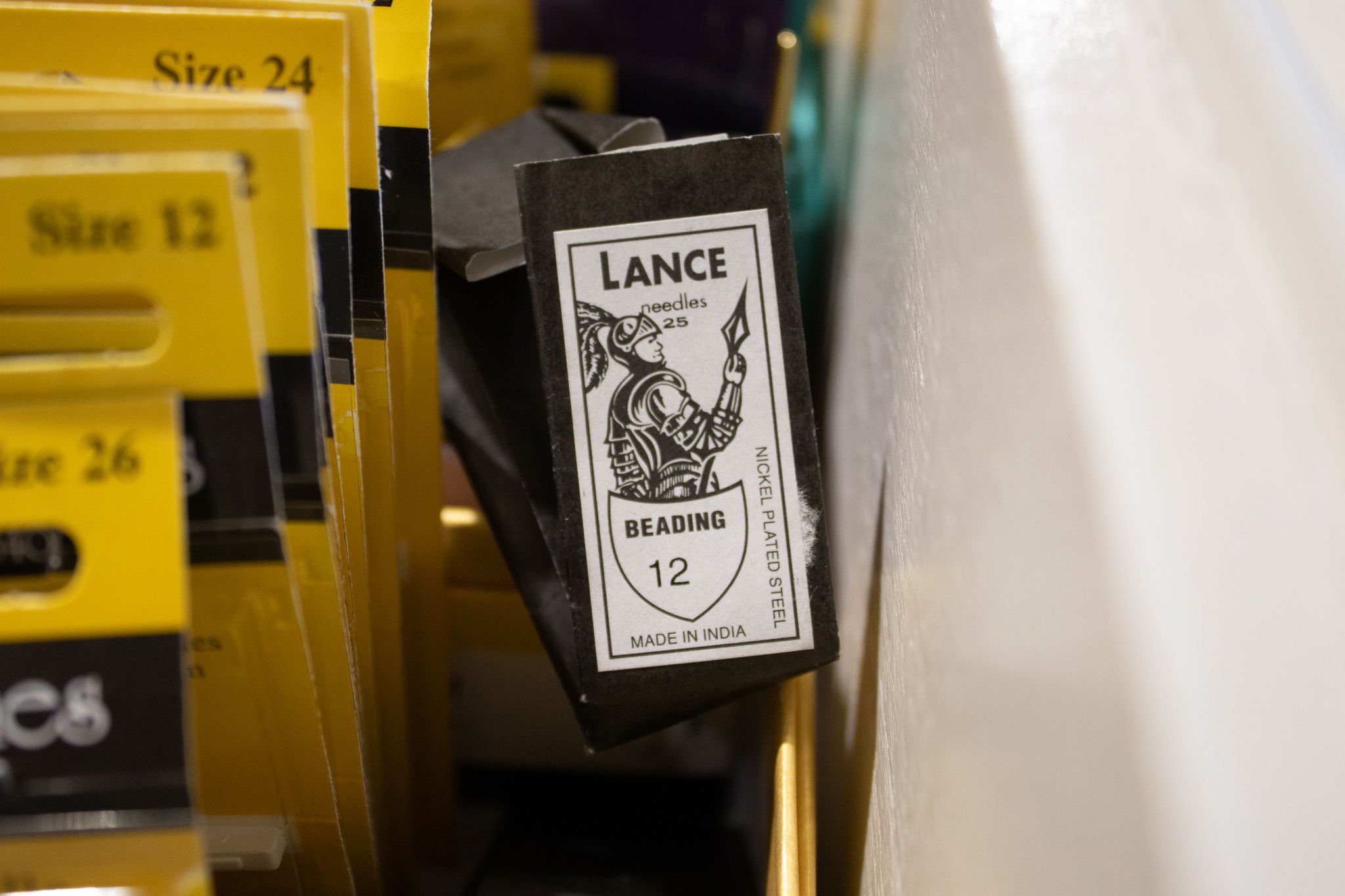
Milliners or straw – straw needles are longer than sharps and the same diameter all the way along, they are used by milliners, but in embroidery are useful for beading and when the eye would make life trickier – try a straw needle when creating bullions.
Straws are available in sizes 1 -18
Glovers, leather or wedge – glovers are used for sewing leather. Their triangular point ensures that the leather is cut, not torn. Use for kid in goldwork. Also used on plastic and vinyl.
Glovers are available in sizes 1 to 8
Quilting, betweens or blunts – quilting needles are similar to sharps but shorter in length and favoured by tailors because of the ability to sew fast with short, strong needles. They also enable quilters to carry out fine work on heavy fabrics.
Betweens are available in sizes 1 to 12
Blunts are available in sizes 1 to 9
Darners – darners are long needles with long eyes used for darning. Darning can be purely functional or decorative.
Darners are available in sizes 1 to 18
Ballpoint – ballpoint needles are used for sewing stretch or knitted fabrics. They are particularly useful for synthetic fabrics.
Bodkin – a bodkin is a blunt needle of various sizes used to thread cord, tape or ribbon through holes or casing. They are essential for tassel making.
Curved – curved needles are very useful; they can access areas unavailable to straight needles. They are essential for mounting and box making.
Bracing or packing – bracing needles are used to tension string when framing up for embroidery. They are long and wide with a large eye. Their spear shape enables quick framing up.
I used to use them when farming to sew up wool large sacks full of wool. To buy consider an agricultural merchant – they are cheaper!
Easy threading – for those who find it difficult to thread regular needles, these needles have a cut through the top of the eye, allowing the tread to be pushed into the top of the eye. I find they wear the thread.
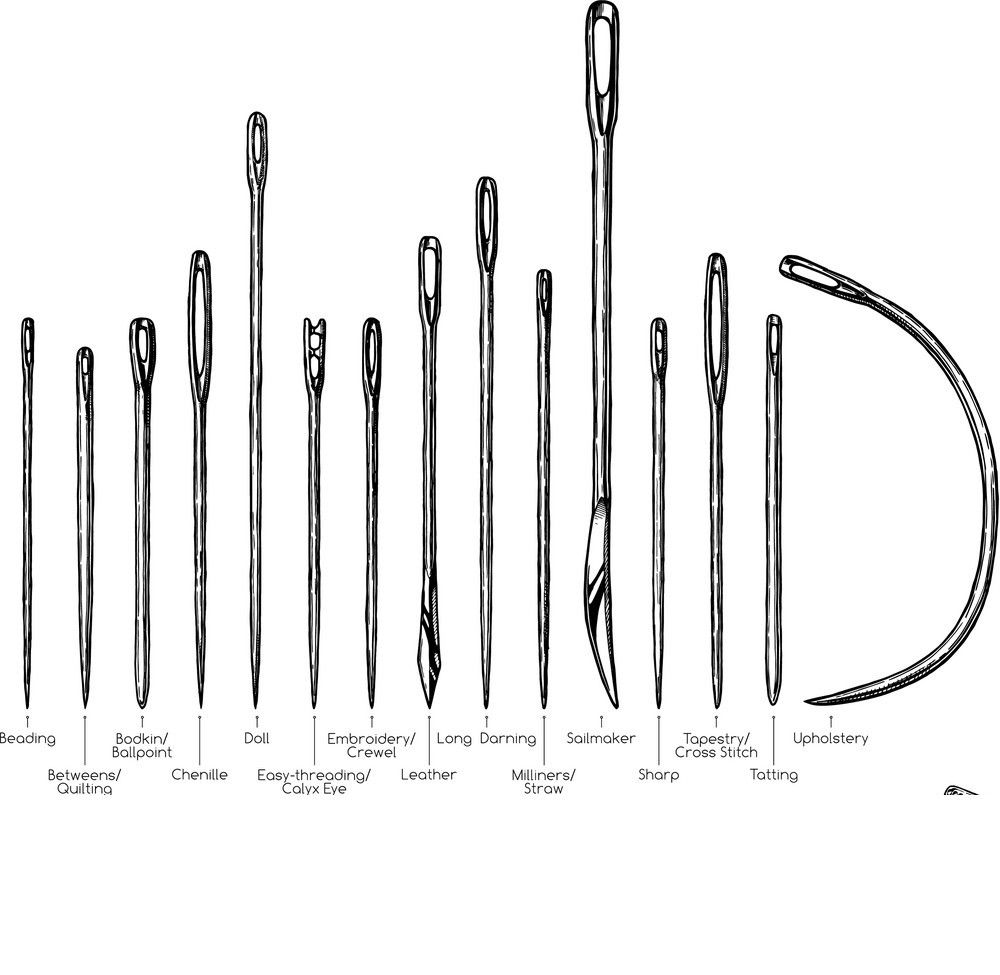
Needle cases – needles need to be kept dry and safe. Choose a needle case or roll that is large enough to sort your needles into type.
Needle threader – a needle threader is most commonly a wire hoop which is pushed through the eye of the needle, the thread is then inserted into the wire loop and pulled back through the needle. I try not to rely on a threader as some needles (especially those used for silk shading) have eyes that are too small to accommodate a threader.
Needle cleaner – usually in the shape of a strawberry, made of red velvet and filled with emery powder needle cleaners keep needles in good condition. By pushing the needle in and out of the cushion rust and dirt are removed. These are especially useful for fine needles.
Makers
John James - https://www.jjneedles.com/
